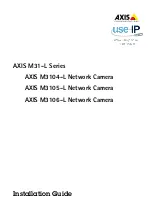
2-2
119136-D Rev. 00
NauticaRS 5.016R Release Notes for Nautica 200
These are the DNS server(s) to use for this path. The
dns-use-if-up parameter provides a way to have the router use a
path that is up, rather than bring up a new path. Effectively it
overrides the default rules (see below).
The DNS context has two parameters:
•
enabled: enable/disable all DNS
•
max-cache-entries: limit number of cached DNS resource
records to this value
Within the DNS context, DNS rules are created in the form of
entries. A DNS entry takes the form of domain/pathname. The
word default has a special meaning here.
For example, these entries:
baynetworks.com/Valbonne
wellfleet.com/Valbonne
microsoft.com/Microsoft
default/myISP
Have the following meanings:
•
For baynetworks.com and wellfleet.com, use the path called
Valbonne.
•
For microsoft.com use the path called Microsoft.
•
For anything else use the path myISP.
Note that DNS is separate from the IP routing table, but for DNS
to work, and to be useful, the IP routing table must be configured
correctly, and in harmony with the DNS proxy configuration. For
the example above, it is likely that several static IP subnet routes
would need to point to the Valbonne path (for Bay Networks it
might be 134.177.0.0/16, 192.32.253.0/24, 132.245.0.0/24,
141.251.0.0/24), another static subnet route for the Microsoft
path, and a default route pointing to the myISP path).















































